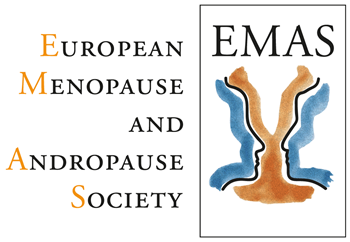Prof Petra Stute: Welcome to the EMAS Menopause in the Workplace Podcast, a special series celebrating World Menopause and Work Day, held every year on September 7. This Global Awareness Day was launched by the European Menopause and Andropause Society (EMAS) in 2021, following the publication of our Global Consensus Recommendations on Menopause in the Workplace, to spark conversation and action around an issue that affects millions, yet is still too often overlooked.
I’m Professor Petra Stute, president of EMAS, and here’s what we know: menopause impacts work and work impacts menopause, but too often, no one’s talking about it.
In this episode, Menopause in the workplace: A toolkit for HR leaders, we hear from Claire McCartney, Policy and Practice manager at the Chartered Institute of Personnel and Development (CIPD), the UK’s professional body for HR and people development. Claire shares research, practical insights, and a clear message: supporting menopause in the workplace isn’t just good for women; it’s good for business too.
Claire McCartney: I’m Claire McCartney, policy and practice manager at the CIPD, the professional body for HR and People development, and it is a real pleasure to be contributing to this podcast series organised by EMAS on Menopause in the workplace. At the CIPD, we have around 160,000 members worldwide with offices in the UK, Ireland and the Middle East, and we all work together to champion better work and working lives. So I think it’s quite clear to see that our work relating to menopause and women’s health at work is closely linked to that purpose. Now, in my short podcast today, I’m going to be talking specifically about menopause at work and developing an HR leader’s toolkit to help create menopause-friendly workplaces.
And the starting point for any HR professional is understanding the business imperative to create menopause-supportive workplaces. Now EMAS estimates that around half of the 657 million plus women aged 45 to 59 worldwide are in the workforce during their menopause years. Now this is therefore a key recruitment and retention issue to tap into female talent, often at the peak of their skills, their knowledge and their experience. And it is also a strong compliance case. In many countries, employers have a duty of care for employees’ health and well-being, and not to discriminate on the grounds of things like areas like age, sex and even disability, where symptoms are severe and ongoing. And if you’re a responsible employer who cares about your people, then it’s the right thing to do.
So after establishing the business case, the next step for HR and organisations is to develop a supportive framework around menopause and ensure that all employees, regardless of level, are educated and aware of the support that’s on Offer. And this is very much needed because in our own CIPD research, we surveyed over 2000 women aged 40 to 60, in employment in the UK, about their experiences of menopause and work. And our findings showed that a lack of support can have serious consequences for career progression. Over a quarter of women in work with menopause symptoms said that menopause had had a negative impact on their career progression. And actually, if you scale this up to the labour market as a whole in the UK, then it’s estimated to be around 1.2 million women. Almost one in four have also considered leaving work or left work due to a lack of support for their menopause symptoms. And our findings also show that individuals who feel unsupported by their employer are significantly more likely to report an increased amount of pressure and stress.
So what are some of the overall principles that organisations can adopt to promote awareness and good practice for menopause and women’s health? And what are some of the things that should be in HR’s toolkit?
Well, first of all, I think one of the first key pillars is building an open and inclusive culture, and this will help to normalise women’s health issues in the workplace, such as menopause, but other areas as well, such as menstrual health. And I think you can do this by holding supportive discussions and creating an open dialogue. For many of the organisations that we’ve worked with, having those open conversations as a starting point really helped to kick start and further develop support throughout the organisations, and that ability to talk about these issues openly and to ensure that women were able to get the support that they needed.
Secondly, the second pillar is around creating awareness and tackling any stigma. So, for example, you could communicate positive messages around menopause or women’s and reproductive health and support. Also, demonstrate that leaders and managers take these issues seriously. You could include references to menopause and maybe other areas like menstrual health, fertility support and pregnancy loss across your policies and guidance. And you might want to have a dedicated section for information and resources on women’s health on your company intranet. Or perhaps physical copies of support or posters for those in frontline roles.
The third important pillar is developing a supportive framework, and this could include policy provision, support pathways, guidance and training. You need to make sure that you have support in place and that you’re proactive in making sure that employees know that support is there. So you might want to look at your people management policies, your equality, diversity and inclusion policies. If you’ve got occupational health in place or employee assistance programmes, or health and well-being provisions. And also review all of these in the light of what support they’re providing around menopause. Review your working conditions and environment, which elements are relevant to supporting women’s health and what perhaps needs to change. It’s also very important to make sure your absence management system is fair and flexible enough so that it doesn’t unfairly penalise someone who’s experiencing ongoing menopause or even menstrual health symptoms.
The final pillar for us is really very important. It’s around training and supporting people managers. They’re a crucial part of managing women’s health effectively, fostering a supportive culture and making sure women are supported practically as well. So we need to make sure that they’re educated and aware that they understand their organisational policies, and also some of the practical workplace adjustments that might be helpful. And our own CIPD research found that some of the most highly appreciated types of adjustments include planned flexible working, ability to control local temperature, last last-minute or unplanned late starts after sleep disturbances, more breaks when needed and also access to areas like occupational health support. Now support should be tailored to the individual, and people will experience and have very different symptoms, so it’s really important for managers to have regular one-to-ones with their teams to understand the importance of sensitivity and discretion. And it’s also not about making assumptions, but taking your lead from the individual and tailoring support wherever possible.
So thank you, once again, to EMAS for having the chance to contribute to this Menopause in the workplace series and do head to our CIPD website if you’re interested in seeing more of our research on menopause and women’s health and our practical guidance for HR and organisations. And of course, there are lots of resources that are particularly helpful on the EMAS site.
Prof Petra Stute: Thanks for listening. If you enjoyed this episode, don’t keep it to yourself. Share it with a colleague, a friend, or someone in your workplace who might need to hear it. To discover more about menopause at work and how to take action, visit emas-online.org and explore our resources, events, and educational tools. Let’s keep the conversation going.


